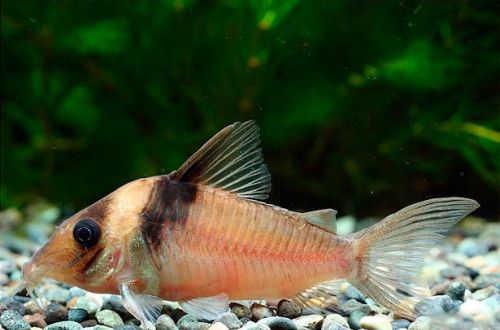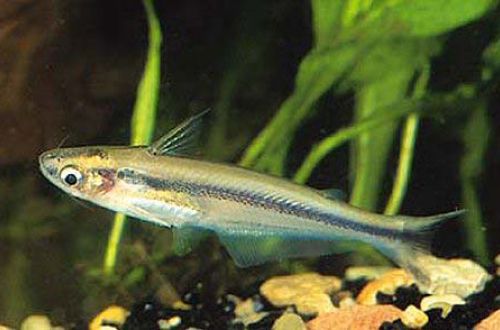
Corridors Virginia
Corydoras Virginia or Virginia (depending on transcription), the scientific name Corydoras virginiae, belongs to the family Callichthyidae (Shelled or callicht catfishes). The fish got its name in honor of the wife of a major South American tropical fish exporter Adolfo Schwartz, Mrs. Virginia Schwartz. It comes from South America, is considered endemic to the Ucayali River basin in Peru.

The fish was discovered in the 1980s and until it was scientifically described in 1993 was designated as Corydoras C004. At one time, it was mistakenly identified as Corydoras delfax, so sometimes in some sources both names are used as synonyms.
Contents
Description
Adults reach a length of 5-6 cm. The fish has a silver or beige color with black markings on the head, passing through the eyes, and in front of the body from the base of the dorsal fin. Fins and tail are translucent without color pigment.
Brief information:
- The volume of the aquarium – from 80 liters.
- Temperature – 22-28°C
- Value pH — 6.0–7.5
- Water hardness – soft or medium hard (1-12 dGH)
- Substrate type – sand or gravel
- Lighting – moderate or bright
- Brackish water – no
- Water movement – light or moderate
- The size of the fish is 5–6 cm.
- Food – any sinking food
- Temperament – peaceful
- Keeping in a group of 4-6 fish
Maintenance and care
Long-term maintenance of Corydoras Virginia will require a spacious aquarium from 80 liters (for a group of 4-6 fish) with clean, warm, slightly acidic soft water. The decor doesn’t really matter, the main thing is to provide a soft substrate and a few shelters on the bottom.
Maintaining stable water conditions depends on the smooth operation of the filtration system and the regular implementation of a number of mandatory procedures, such as weekly replacement of part of the water with fresh water and the timely removal of organic waste (feed residues, excrement). The latter, in the absence of living plants, can quickly pollute the water and disrupt the nitrogen cycle.
Food. There will be no difficulty in choosing the right food, since Corydoras are omnivores. They accept almost everything, from dry flakes and granules, to live bloodworms, arrhythmias, etc.
behavior and compatibility. They prefer to be in small groups. Single and pair keeping is not recommended, but acceptable. They get along well with other peaceful species.





